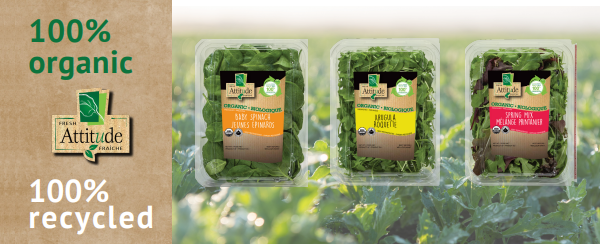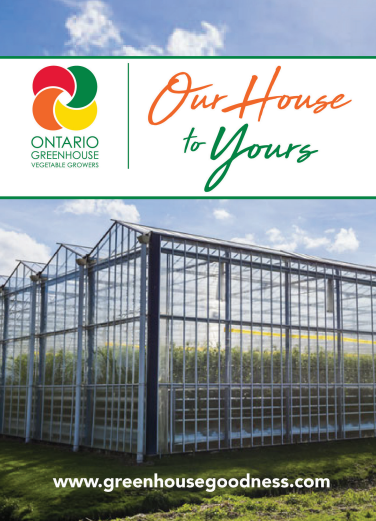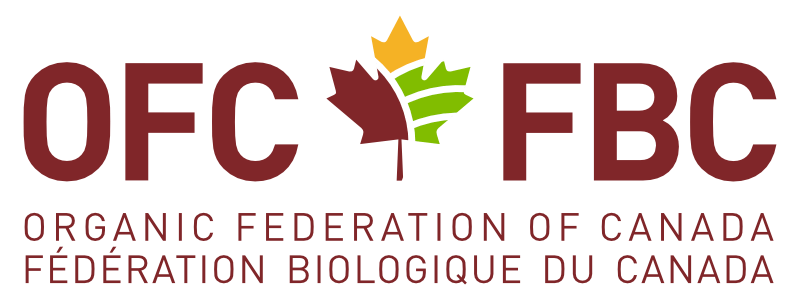Organic Greenhouse Growing #
Janet Wallace
The demand for organic food continues to rise in Canada. Given our long winters and year-round consumer demand for fresh, locally-grown vegetables, there is increasing interest in organic greenhouse produce. However, as of 2019 only 6 percent of Canadian greenhouses were certified organic.
Transitioning to organic production may seem daunting for conventional greenhouse operators, particularly those growing hydroponically and relying on synthetic fertilizers and pesticides. Because the foundation of organic agriculture is soil, hydroponics is not permitted and there are strict requirements for the composition and minimum amount of potting mix each plant can access. Fortunately, over the last three Organic Science Clusters (OSC), Canadian researchers have been investigating how to create an ideal potting mix and provide a balanced supply of nutrients to greenhouse crops.
According to the 2020 Canadian Organic Standards, the potting mix for container crops and other greenhouse crops (as defined in Section 7.5) must:
- “Contain a mineral (sand, silt or clay, excluding perlite and vermiculite) and biological fraction, which contribute to the physical soil structure;
- “Be composed of at least 10 percent by volume of compost (exception: seedling/
starter mixes may contain less than 10 percent compost if needed to ensure adequate germination/rooting); and; - “Contain at least two percent by dry weight or volume (whichever unit of measure is appropriate) of minerals (sand, silt or clay, excluding perlite and vermiculite) at the start of a production cycle.”
Fine-tuning Nutrient Supply #
OSC research has shown that yields of organic greenhouse tomatoes can be as high as non-organic yields . However, according to OSC researchers Drs. Valérie Gravel and Martine Dorais, “Organic fertilization is often unbalanced” in greenhouses. Fine-tuning the nutrient supply is more challenging in greenhouses than in fields where growers can build up the soil quality and soil life over years and throughout crop rotations. In greenhouses, there is a high demand for nutrients given that the annual yield per area is often 10 times that of field crops. A good crop of greenhouse tomatoes (e.g., producing of 50 kg/m2) can require as much as 1250 kg N/ha.
A successful organic greenhouse is a finely tuned system where operators, with the help of soil life, synchronize the release of nutrients from soil amendments with nutrient requirements of the crops. This is particularly difficult for seedlings. As Dr. Dorais states, “the amount of fertilizer that should be added to the medium has to be low enough so the salinity does not causedamage to the developing root system but high enough to sustain plant growth up to transplanting.”
Salinity, which is measured through electrical conductivity (EC) readings, can inhibit germination and stunt seedlings. A high proportion of compost or other organic fertilizers can lead to high salinity. Salinity is less of a problem when compost is based on plant materials rather than manure.
One approach is to provide slow-release nutrient sources, such as compost, in potting media and supplement through topdressing and liquid nutrients. Gravel’s team found that in raised bed containers, organic tomatoes grown in a peat-based medium had yields as great as non-organic tomatoes grown on a coir-based medium, but only in the second year the medium was used. In the first year, the plants may have suffered from a lower release of nutrients due to less microbial activity. In the second year, the microbial community was
more established.
The difference of organic fertilizers #
Introducing microorganisms to the potting mix can help transform nutrients into forms plants can use. For example, Dr. Gravel found that Trichoderma harzianum (Rootshield®) stimulated biological activity. In strawberries, applications of T. harzianum led to higher levels of the polyphenols and anthocyanins (phytochemicals linked with flavour and human health benefits).
Laval University’s Pierre-Paul Dion found that different organic fertilizers had different effects on soil life, which affected how quickly nutrients were released. Alfalfa meal provided slow, long-term N release. In contrast, blood meal and feather meal provided quick, short-term N.
Shrimp meal and pelleted poultry manure provided “a better-balanced organic fertilization supporting diversified microbial communities and reducing the need for mineral inputs to sustain plant nutritional requirements other than N.” However, half of the nitrogen in the pelleted poultry manure was released quickly; this could damage plants if the application rate is too high.


The Organic Science Cluster 3 is led by the Organic Federation of Canada in collaboration with the Organic Agriculture Centre of Canada at Dalhousie University, and is supported by the AgriScience Program under Agriculture and Agri-Food Canada’s Canadian Agricultural Partnership (an investment by federal, provincial and territorial governments) and over 70 partners from the agricultural community.
This magazine may be cited as: Geldart, E.. Graves, M.E., Boudreau, N., Wallace, J., and Hammermeister, A.M. (Editors). 2022. Organic Science Canada. Volume 4. Organic Federation of Canada, Montreal, QC and Dalhousie University, Truro, NS. 40 pp. www.dal.ca/oacc/oscIII


